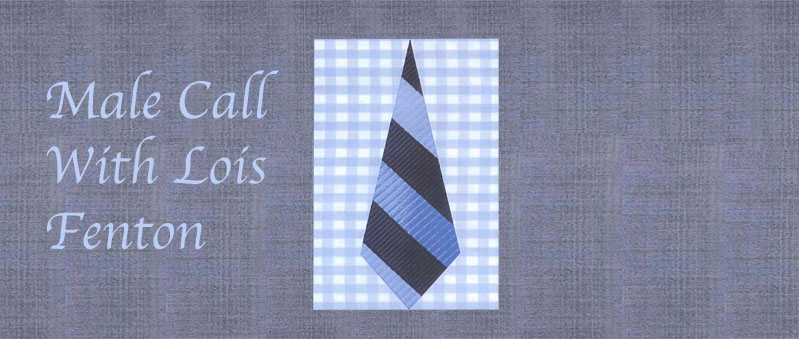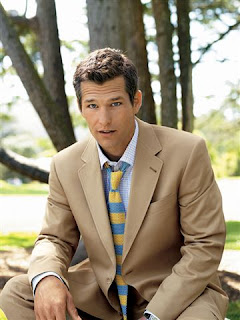3536 Q. I want to thank you, for the e-mail advice you gave me on the four shirts I bought from Brooks Brothers. I thought the shirts looked nice but I had no idea how badly, perhaps, I was dressed in the past when I was going to meetings. Just in wearing those new shirts to two important meetings, I suddenly received comments about my nice haircut (I didn't have a haircut at the time), and women came over to chat with me who previously ignored me. I'm both happy and mortified at the change!
I
was also wondering if you might answer a question about suits. Given that my
new role at work will involve dealing with some of our new hedge fund
investors, I thought I should do something about getting a suit or two. I'm
afraid to even describe to you what I wore to the recent investment meeting I
attended. (I really just have a dark jacket and a pair of gray slacks.) I'm
thinking about looking my best when meeting investors (and I'm also thinking
about looking better on a date as well.)
I've noticed that Brooks Brothers periodically has a "2-for-1 suit sale." Can you tell me where to start?
I've noticed that Brooks Brothers periodically has a "2-for-1 suit sale." Can you tell me where to start?
A.
With finding a suit or a date? Just kidding! But I am delighted that you have
seen so clearly what I have been saying for years: Women notice and are
attracted to men who pay attention to their appearance and who put themselves
together attractively. Not men who dress foppishly, but men whose taste level
shows they have good judgment and are worldly. Their choices project
self-confidence and sophistication – a great appeal.
Also,
good for you for realizing that a dark-jacket-and-gray-slacks combination is
NOT a suit. Every man should have at least one actual matched suit in his
closet, and going to a fine quality store is the best approach to purchasing a
suit. (FYI, Do not make the mistake
of buying a custom suit. This is not wise for a first or a second suit. True,
the endless options are enticing, but they are precisely why you should not opt
for custom. Do you really know enough to be designing a suit?)
Think
classic. Think grays, dark blues, or perhaps a tan or khaki. Stick to a businesslike
look – not too casual, but not boardroom formal either. Because versatility is
what you are aiming for, choose a solid, not a stripe. Consider cutting out a
few pictures from newspapers or magazines to take with you. Better yet, shop in
a men’s specialty shop known for its traditional style and reliability . . . yes,
Brooks Brothers fits that category.
Be
certain to take your time when you go into the store. (You want to look for a
salesperson whose taste you admire.) When you walk in, one salesman will
approach you. In retailers’ parlance, the man who is “up” gets the next
customer. But you are not obligated to follow the store’s system of rotation.
Unless you are impressed with the salesman’s manner and the way he is dressed,
do not accept his offer to help you. “No thanks, I’m just looking,” is what you
say. Observe the other salespeople, and note the kind of customers they are
serving. If you admire the look and manner of one salesman, wait until he is
available. Then you approach him. Let him dress you the way you want
to look.
Remember,
too, that when you are being fitted by the tailor for any needed alterations to
your new suit, be tough. Insist on answers to any questions. There is still
time to pull out – to take the suit off and say you’ve changed your mind.
So,
beyond color and pattern(less), exactly what kind of suit should you look for? Keep
in mind those two all-important words: Classic and versatile. Choose a two-piece,
two-button, single-breasted cut, notched (not peak) lapels, either single back
vent or British double vents, year-round lightweight wool, cuffs on the pants. Current
styling calls for a somewhat trimmer fit and plain-front pants.
I’ll
bet you’ll find that all of your new shirts look great with any of these suits.
(Please get back to me. I can't wait to hear what happens!)



